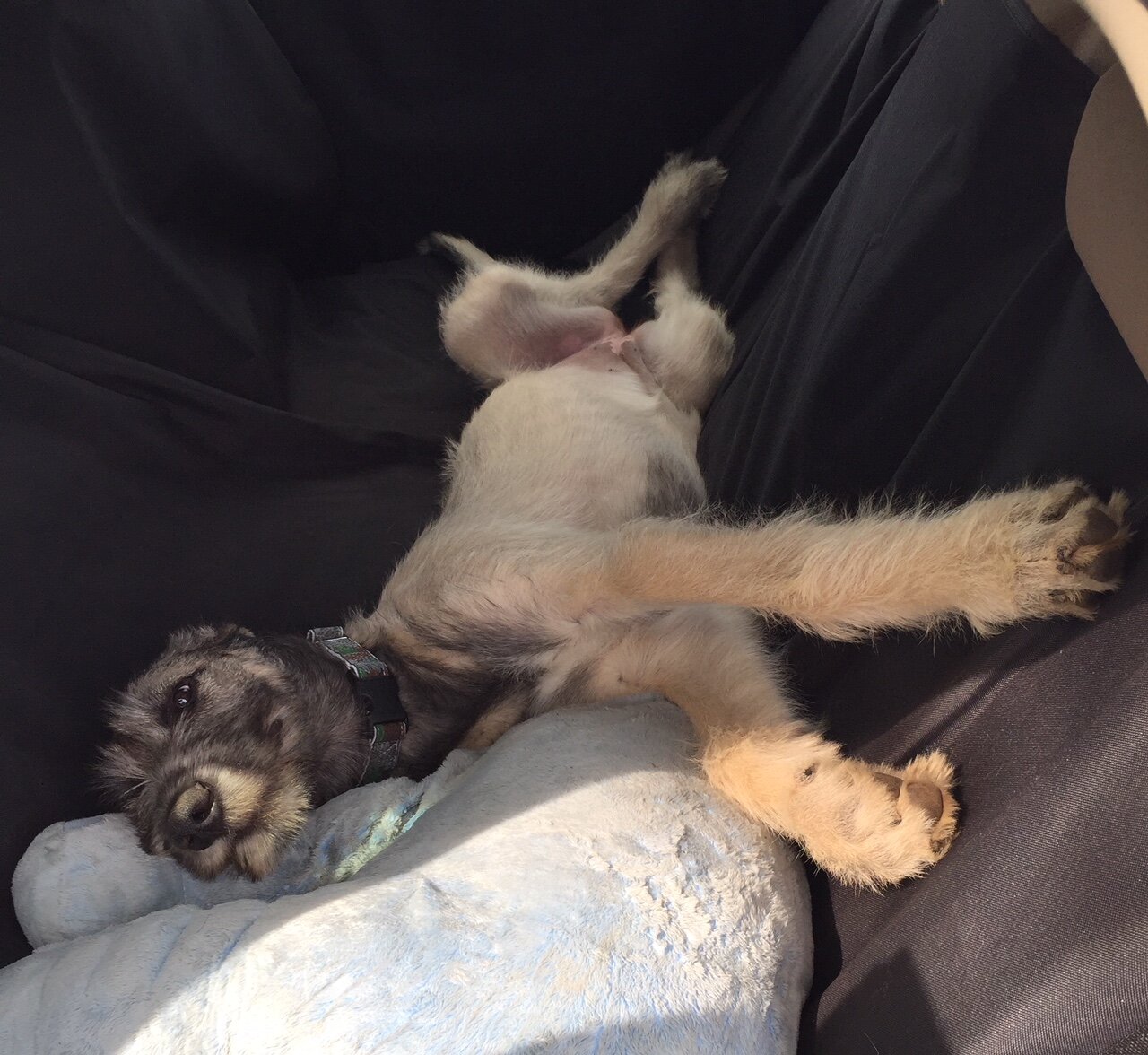A very brief intro to working through separation anxiety
Owners often realize that their dog is experiencing separation anxiety because they hear incessant barking (or get complaints from neighbors about it) as they’re leaving or returning home, find their dog has demolished their home, broken out of their crate, or emptied their bladder or bowels. These dogs are not just upset about being left alone; they are experiencing panic attacks. The solution is not to purchase an indestructible crate and a bark collar to suppress their behavior, but rather, to use desensitization techniques to teach the dog that they can be alone and feel okay about it.
The first step is to stop leaving your dog alone for longer than they can handle - which probably means not leaving them at all. That may seem overwhelming, but with help, it can be done. Here are some options:
Shifting your family members’ schedules when possible so that you trade off dog care.
Having people come over to spend time with your dog while you’re out: neighbors, friends, family members, people within your communities such as church, knitting circles, sports teams.
Taking your dog to spend time at someone else’s home - see list above, and consider other dog owners who don’t mind having one extra for a few hours. You could even trade care with them, so other times you’re watching both the dogs when they need a break.
Posting on social media such as NextDoor or Facebook to find more helpers not already in your social circle.
Bringing your dog with you on errands. (Just mind the temperature of the car on warm days.)
Hiring a pet sitter.
Taking your dog to daycare.
With that management plan in place, you will now begin the desensitization process. This starts with very, very low intensity doses of being “left alone” - that might be literally just opening the front door and closing it again, without stepping outside. Repeat until your dog shrugs this off as not interesting. Then start opening the front door, stepping through, returning, closing the door. You’ll also need to desensitize your dog to your “getting ready to go out” routine, such as putting on shoes, picking up keys, setting the alarm system, etc. There are many more nuances to this process and it should not be attempted without learning more from the resources or referrals below.




